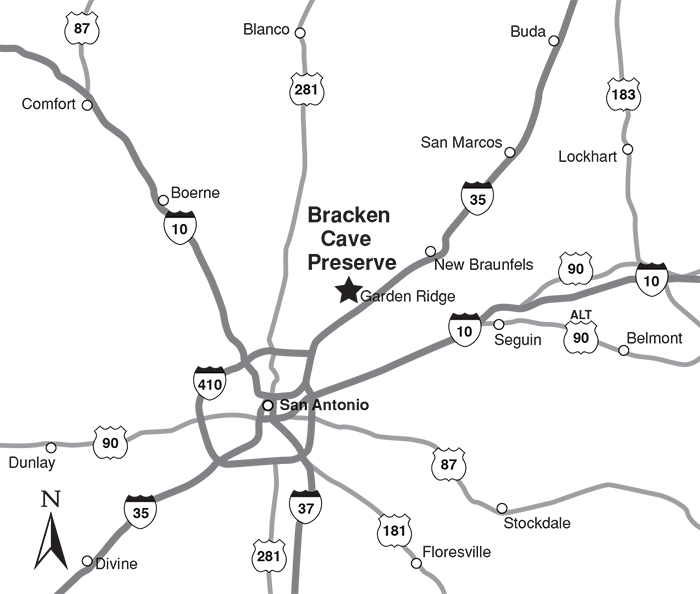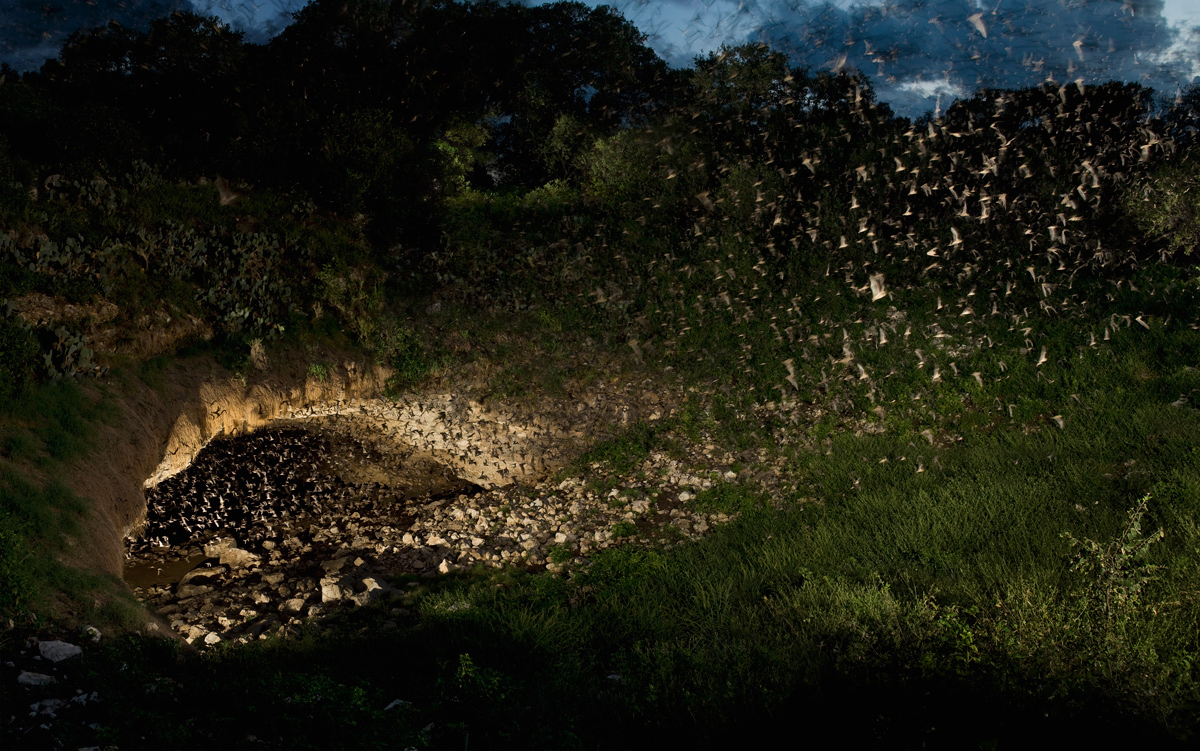Bracken Cave Preserve
Texas hill country Region
Bracken Cave, on the northern outskirts of San Antonio, is home to the world’s largest bat colony, with more than 15 million Mexican free-tailed bats. It is a key maternity site for this species, and females congregate there each year to give birth and rear their young. Mexican free-tailed bats are an essential predator of corn earworm moths and other crop pests, and the Bracken colony alone is estimated to consume over 100 tons of these moths every summer night.
Bat Conservation International (BCI) initially purchased the Bracken Cave in 1991 and now owns nearly 1,500 acres of the former ranchland surrounding the cave. Although the land lost some of its original plant and animal diversity as a result of ranching and other commercial uses, it is being managed as a nature preserve and is home to many bird species, including endangered golden-cheeked warblers. BCI is restoring the land to its former beauty and is raising money to one day open this site to the public for education and research about bats and Hill Country habitats. In the meantime, BCI hosts visitation nights for its members and partners during the summer months. BCI is working with The Nature Conservancy, Texas Parks and Wildlife Department, the U.S. Fish & Wildlife Service, and other partners to ensure the protection of this amazing natural resource in Texas. For more information about the site and how you can help, visit www.batcon.org/see-bats-live/visit-bracken-cave-preserve/.
Visitation Info
Fees
- Membership in Bat Conservation International (starting at $45) required to attend Member Nights.
Reservations
Reservations are required for BCI members.
Hours
The schedule is set in early spring and is posted at www.batcon.org/see-bats-live/visit-bracken-cave-preserve/
ADA Accessible
Yes
Ownership
Bat Conservation International
Contact Information
- (512) 327-9721 (BCI)
- www.batcon.org
Location & Directions
Multimedia
Bat Fact
You can provide bats a place to live by building bat gardens and houses. Instructions can be found on the Bat Conservation International's webpage, Bat Gardens & Houses.


